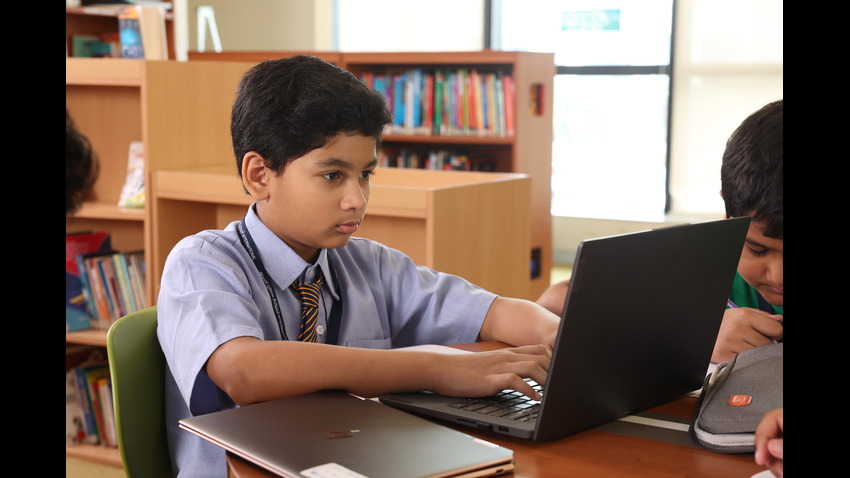
Managing Screen Time for Students: How Much Is Too Much?
2025-02-25
Explore effective strategies for managing screen time for students and discover how much screen time is healthy. Learn about the impact of excessive screen use on students' well-being and find tips to promote a balanced lifestyle for teenagers in today's digital age.
In an increasingly digital world, managing screen time for students has become a pressing concern for parents, educators, and healthcare professionals alike. The rise of smartphones, tablets, and computers has transformed the way young people interact, learn, and communicate. While technology offers numerous benefits, excessive screen time can lead to various health issues, making it essential to understand how much screen time is healthy for students, especially teenagers.
Understanding Screen Time
Screen time refers to the amount of time spent in front of screens, including televisions, computers, tablets, and smartphones. It encompasses various activities, such as educational tasks, social media interaction, gaming, and entertainment. As technology continues to evolve, so too does the need to manage how students engage with it. The question many parents ask is, “How much screen time is healthy?”
The Importance of Setting Limits
Establishing limits on screen time is crucial for maintaining a balanced lifestyle for students. Excessive screen time can lead to several negative outcomes, including physical health issues, mental health concerns, and impaired academic performance. Research indicates that prolonged screen time can contribute to sedentary behavior, leading to obesity, poor posture, and eye strain. Additionally, students may experience increased feelings of anxiety and depression linked to excessive social media use and constant connectivity.
Understanding how much screen time is healthy is vital for fostering overall well-being. The American Academy of Pediatrics (AAP) suggests that children aged 2 to 5 should have no more than one hour of high-quality programming per day, while children aged 6 and older should have consistent limits on screen time to ensure it does not interfere with sleep, physical activity, and other healthy behaviors.
How Much Screen Time is Healthy for a Teenager?
For teenagers, the question of how much screen time is healthy becomes even more complex. Adolescents typically use screens for various purposes, including homework, socializing, and entertainment. While technology can facilitate learning and communication, it is essential to strike a balance. Experts recommend that teenagers limit their recreational screen time to no more than two hours per day. However, it is crucial to differentiate between recreational and educational screen time.
Educational screen time, such as online classes, research, and interactive learning applications, can be beneficial. Parents should encourage their teens to use technology to support their learning while ensuring they also engage in offline activities. Activities such as reading, exercising, and spending time with family and friends contribute to a well-rounded lifestyle and are essential for healthy development.
Strategies for Managing Screen Time:
Establish Screen Time Guidelines
One of the most effective ways to manage screen time for students is to set clear guidelines. Parents can establish daily limits on recreational screen time while allowing for flexibility with educational use. For example, parents might allow two hours of recreational use after completing homework and chores. By creating a structured environment, students can develop healthier habits and learn to prioritize their responsibilities.
Encourage Screen-Free Activities
Promoting alternative activities that do not involve screens is essential for creating a balanced lifestyle. Encourage students to participate in hobbies such as reading, sports, arts and crafts, or outdoor play. These activities not only reduce screen time but also promote creativity, physical fitness, and social interaction. Families can plan regular screen-free outings, such as hiking or game nights, to foster connections and provide a break from technology.
Model Healthy Screen Habits
Children often mimic the behavior of their parents and guardians. By modeling healthy screen habits, adults can set a positive example for students. This includes being mindful of personal screen time, prioritizing face-to-face interactions, and engaging in activities together as a family. Demonstrating a balanced approach to technology encourages students to follow suit and develop their own healthy habits.
Create Tech-Free Zones
Establishing tech-free zones within the home can help manage screen time effectively. Designate specific areas, such as the dining room or bedrooms, as screen-free zones to encourage family interactions and quality time. This practice promotes healthier routines, such as screen-free meals and bedtime rituals, contributing to better communication and stronger family bonds.
Monitor Content and Quality
It is essential to monitor the content students consume during their screen time. Encourage them to engage with high-quality educational resources, documentaries, and informative programs rather than mindless scrolling through social media or watching low-quality entertainment. Discussing the content together can also provide opportunities for meaningful conversations about the themes and messages presented.
Recognizing Signs of Excessive Screen Time
It is crucial for parents and educators to recognize signs of excessive screen time in students. These signs may include:
- Decreased academic performance: Struggles with homework or declining grades may indicate that screen time is interfering with study habits.
- Social withdrawal: If students prefer to spend time alone with screens rather than engaging in social activities, it may signal an unhealthy reliance on technology.
- Physical health issues: Complaints of eye strain, headaches, or sleep disturbances can be linked to excessive screen exposure.
Conclusion
Managing screen time for students is essential for fostering a healthy lifestyle and promoting overall well-being. Understanding how much screen time is healthy and implementing strategies to limit recreational use can significantly impact students' physical, mental, and emotional health. As technology continues to play an integral role in education and daily life, it is crucial to strike a balance that allows students to benefit from technology while maintaining healthy habits. By establishing guidelines, promoting screen-free activities, modeling positive behavior, and monitoring content, parents and educators can help students navigate the digital landscape effectively, ensuring a brighter, healthier future.
Blogs

Student-Led Conference



